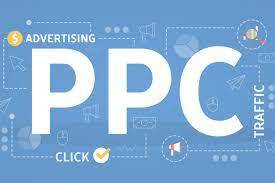You want to increase Amazon sales. With the help of this thorough guide, discover how to manage Amazon PPC campaigns successfully. Start right away! Are you an Amazon seller hoping to raise the profile of your products and improve sales? In that case, PPC (Pay-Per-Click) advertising on Amazon might be your best friend. This tutorial will help you through the process of setting up and perfecting effective Amazon PPC campaigns.
Table of contents
- Step 1: Recognise the Foundations of Amazon PPC
- Step 2: Identify Specific Goals
- 3. Conduct keyword research
- Step 4: Develop Powerful Ad Campaigns
- Step 5: Improve Your Product Listings
- Step 6: Set your budget and bids
- Step 7: Evaluate and Modify
- Step 8: Negative Keywords
- Step: 9 Split testing
- Step 10: A/B testing landing pages
- Step11: Scaling Up
- Step 12: Continue to Learn
- Step 13: Look for expert assistance
- Conclusion
- FAQ’s
Step 1: Recognise the Foundations of Amazon PPC
Understanding the foundations is essential before getting started. Amazon PPC is a type of platform-based paid advertising where you place bids on keywords and have your product show up at the top of pertinent search results. Only when a customer clicks on your ad do you get paid.
Step 2: Identify Specific Goals
Establish your goals. Are you trying to boost sales, publicise a new product, or raise brand recognition? Your campaign plan will be shaped by having certain targets.
3. Conduct keyword research

The foundation of a good PPC campaign is keyword research. To find high-relevant, low-competition keywords, use third-party tools and the Amazon Keyword Planner. Long-tail keywords may be used for more precise targeting.
Step 4: Develop Powerful Ad Campaigns
Sponsored Products, Sponsored Brands, and Sponsored Display are the three primary PPC ad kinds available on Amazon. Pick the one that best supports your objectives.
· Promote individual product listings with sponsored products.
· Promote your business and a variety of products with sponsored brands.
· Target both Amazon and non-Amazon shoppers with sponsored displays.
Make sure your product photographs are of the highest calibre while establishing your advertising campaigns. To determine which combinations work best, do A/B testing.
Step 5: Improve Your Product Listings
Make sure your product listings are optimised before running advertising. This includes appealing descriptions, top-notch photos, and affordable prices. The more effective your product page is, the more probable it is that clicks will result in sales.
Step 6: Set your budget and bids
Establish your daily spending limit and the maximum bid you’re willing to place for each keyword. Beginning cautiously, make adjustments as you gather data. You want your ACoS (Advertising Cost of Sales) to be lower than your profit margin, therefore pay attention to it.
Step 7: Evaluate and Modify
As soon as your campaigns go live, keep an eye on how they’re doing. Keep tabs on statistics such as click-through rate (CTR), conversion rate, and ACoS. Based on performance, modify your bids and keyword selection.
Step 8: Negative Keywords
Review your search terms report frequently to find irrelevant keywords that cause your adverts to appear. To improve your targeting and reduce your ad expenditure, add these as negative keywords.
Step: 9 Split testing
Try out various targeting, ad copy, and picture alternatives. You can determine what functions best for your items by using split testing. For long-term success, testing and optimisation must be ongoing.
Step 10: A/B testing landing pages
Run A/B tests to improve conversion rates accordingly if you’re using external landing pages. An effective landing page can greatly increase your return on investment.
Step11: Scaling Up
Consider raising your budget to scale up your advertising efforts as your campaigns start to show a profit. Developing new product lines or markets might also be advantageous.
Step 12: Continue to Learn
Amazon updates its PPC features and algorithms periodically. To adjust to changes, stay updated through Amazon Seller Central and also sector blogs. To remain on top of Amazon advertising trends, attend webinars as well as conferences.
Step 13: Look for expert assistance
If running PPC ads gets to be too much for you, think about hiring a seasoned Amazon PPC consultant or firm. They may offer knowledgeable advice and assist you in maximising your ROI.
Conclusion
In conclusion, Amazon PPC can be a potent strategy for expanding your company’s presence there. You may improve your product visibility, raise sales, and meet your Amazon selling objectives by following these steps and remaining dedicated to tracking and optimising your campaigns. Launch your Amazon PPC campaign right away and watch your company grow!

Visit esols.net for comprehensive advice on Amazon PPC as well as other e-commerce tactics. We want you to be successful in the world of online shopping. Feel free to contact our team of professionals if you have any questions or require further help.
Readmore: Does SEO Require Coding?
FAQ’s
Sellers who use Amazon PPC (Pay-Per-Click) advertising pay a fee each time a customer clicks on their ad. These advertisements are prominently shown in search results and on product detail pages, which raises the visibility of the product and then increase sales.
Go to your Amazon Seller Central account, select the Advertising tab, then start a new campaign to get going. Choose the type of campaign you want to run (Sponsored Brands, Sponsored Products, or Sponsored Display), select a budget, pick a few keywords as well as develop some eye-catching ad creatives.
· Advertisements for “sponsored products” highlight specific product listings.
· Sponsored Brands: These advertisements advertise both your brand and various products.
· Sponsored Display: These advertisements target both Amazon and non-Amazon users, frequently retargeting people who have already looked at your products.
Use third-party tools or the Amazon Keyword Planner to conduct further keyword research. Look for keywords with a large search volume as well as a low level of competition, and relevance to your offering. For thorough coverage, take into account both wide and precise match keywords.




